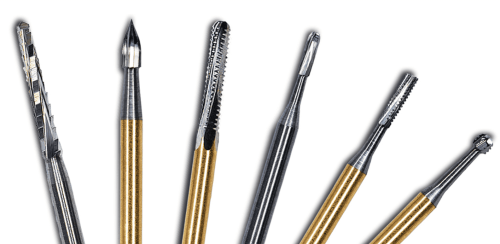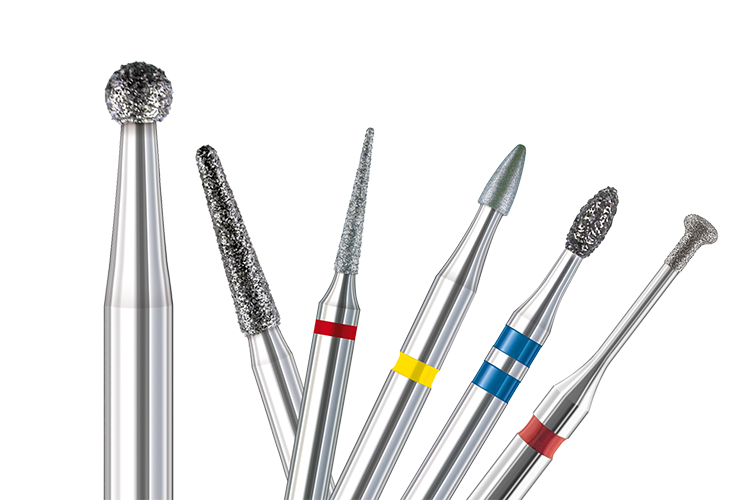Diamond Burs
Made from the hardest material found in nature, diamond burs are capable of precisely cutting the toughest dental enamel and are ideal for working with hard materials that other burs struggle with. For more information, please refer to our Diamond Burs For Clinic series. A significant advantage of diamond burs is their high chemical inertness, making them almost non-reactive with any dental materials or cleaning agents.
However, a drawback of diamond burs is that they are not suitable for shaping materials like metals. During processing, diamond burs tend to dull quickly and may suffer damage due to overheating.

Tungsten Carbide Burs
Tungsten carbide burs, made from wear-resistant tungsten carbide (WC), have the notable advantage of being able to cut through metals. Our specially designed Pear, Plain Cut Tungsten Carbide Burs enable dentists to tackle metal cutting challenges efficiently, saving time with their versatility.

Which Is More Expensive: Diamond Burs or Tungsten Carbide Burs?
In terms of pricing, tungsten carbide burs are generally more expensive than diamond burs.
Both diamond and carbide are extremely durable materials. However, over time, diamond burs tend to lose their cutting effectiveness more significantly than hard alloy burs, resulting in a shorter lifespan. Tungsten carbide burs last longer than diamond burs, making them a more economical and efficient choice for professionals who frequently use grinding tools.
Why Use Tungsten Carbide Burs Despite Higher Cost
Despite the higher cost, both diamond and tungsten carbide burs have distinct application scenarios, making them essential in the arsenal of dental professionals.
Diamond burs, with their high hardness and ultra-fine particle size, are suitable for complex dental procedures that require high precision and delicate work, such as fine processing of the enamel layer, veneer and crown preparation in tooth restoration, and dealing with sensitive areas of teeth near neighboring teeth or gums.
Tungsten carbide burs, known for their fast cutting speed and efficiency, are not as precise as diamond burs for delicate work due to their relatively larger particles and lower cutting accuracy. They are particularly suited for removing extensive decayed tissue from the tooth body, early cavity cleaning, and tooth preparation. Compared to diamonds, tungsten carbide has better toughness, making it highly suitable for procedures like root canal treatment that require strong fracture resistance.
The most significant advantage of tungsten carbide burs is their excellent heat resistance, low wear rate, long lifespan, and ability to cut all metals.
In summary, both diamond burs and tungsten carbide burs have their unique functional characteristics. While diamond burs directly cut off small pieces of the tooth with their small blades, tungsten carbide burs grind down the tooth, potentially leaving a rougher surface. Each type of bur has its advantages and limitations, making them indispensable tools for dental professionals.
Unsure about what you need? Please contact us, and we will respond promptly with recommendations for the burs that best suit your needs.



